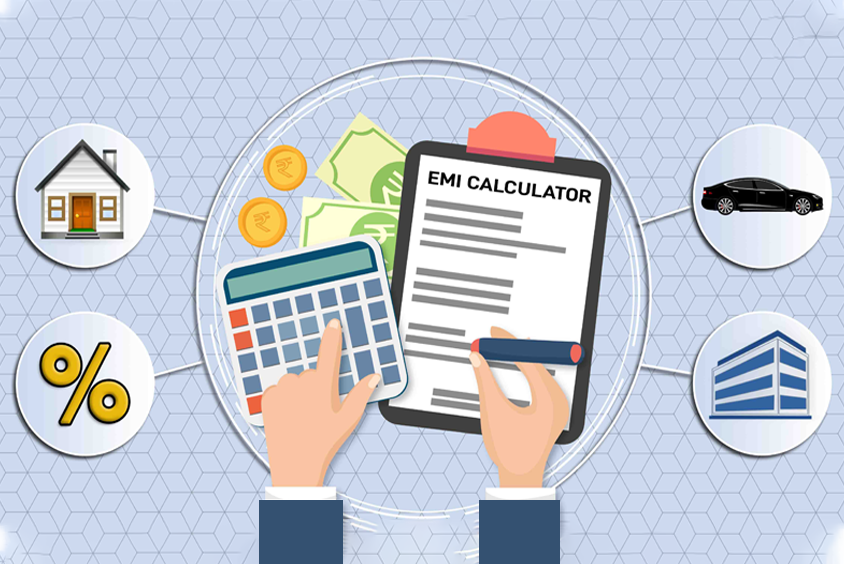Credit Cards have made it easier to make large purchases even when you don’t have a sufficient amount for the same. Though the money you spend using credit cards is not for free, you get a decent time to repay the amount. Credit Cards offer an interest-free period of up to 50 days, i.e. you get a lot of time to pay for the spending that you make using your credit card. But, what if you are unable to pay your bill even after the interest-free period as the amount is very large? This is where Credit Card EMIs come into play. If you have been using a credit card for a long time, you would be aware of what credit card EMIs are and might even have availed of this facility. However, many new credit card users need to be made aware of Credit Card EMIs and they need to learn how the whole process works. To help such individuals, we are here with this article that will make you understand everything about credit card EMIs:

What is a Credit Card EMI Facility?
The EMI (Equated Monthly Installments) facility offered by credit cards allows you to divide your total credit card bill or a certain part of it into smaller installments that you can pay every month until the entire amount is paid. This becomes a great option for those who find it difficult to pay for large purchases all at once. You can either directly purchase an item by choosing the credit card EMI option or you can convert your credit card bill into EMIs later as well. You can choose the tenure of EMI at your convenience. Generally, there are tenure options of 3, 6, 9, 12, 15, or 18 months.
Once you choose the EMI plan for any purchase or you convert your credit card bills into EMIs, the equivalent amount is temporarily blocked on your credit card. And as you keep paying the monthly installments, the amount is unblocked accordingly. For example, you make a purchase worth Rs. 60,000 on EMI with your credit card and choose a 6-month EMI plan with a monthly installment of Rs. 10,000. Now, Rs. 60,000 will be blocked out of your total credit limit and you won’t be able to use it for further purchases. In the first month, you pay Rs. 10,000, and Rs. 10,000 is then unblocked. This process goes on until you pay the entire amount.
How Is Credit Card EMI Calculated?
Though Credit Card EMIs make your purchases much easer, it becomes challenging for some people to understand how credit card EMIs are being calculated. If you have ever used the credit card EMI facility you might have observed that the total amount to be paid is slightly higher than you might have expected. It is because there are various factors that are considered while calculating credit card EMIs. The following are a few of such factors:
Associated Fees and Charges
Credit Cards do offer zero-cost EMIs, but that is not the case every time. Mostly, there are several fees and charges that you need to pay along with the original amount of your purchase. Some of the charges applicable to credit card EMIs are as follows:
- Interest Rate: Interest Rates are also chargeable on credit card EMIs. This interest may vary from bank to bank and from card to card as well. Some card issuers offer EMIs at lower interest rates, however, others may have high-interest charges. But, this interest is generally lower than the regular interest that is applicable on the outstanding balance of your credit card.
- EMI Processing Fee: There might also be a nominal EMI processing fee that you need to pay when availing of the EMI facility on your credit card. This is only applicable in the first month of your EMI tenure and not every month. This fee may also vary for different card issuers.
- Late Fees: If you miss your EMI payment, you might also be charged a late payment fee. So, you must make sure that you are paying your monthly installments on time in order to avoid such additional charges.
Tenure
The tenure you choose for your EMI is also an important factor to be considered while calculating the EMI. It s because, the greater tenure you choose, the higher the total amount due to the interest charges. So even if you are choosing an EMI plan, try to go for the minimum possible tenure.
When To Go For Credit Card EMI?
The option of EMIs is provided by credit card issuers for the convenience of their customers, but as a card user, you should be wise enough to decide when it is a good idea to go for EMIs and when it is not. If you are making a really big purchase for which you can’t repay at once, you should definitely go for the EMI option as having a large outstanding balance may affect your credit score badly. But, make sure to go through your bank’s EMI terms & conditions and understand all the applicable charges. Sometimes people just choose the EMI option even when they can pay the bill all at once, but this is not always a good idea until you are choosing a zero-cost EMI.
Best EMI Credit Cards in India
Although every credit card allows you to make purchases on EMIs, there are a few credit cards specifically targeted at people who prefer EMIs. The following are two such credit cards:
- HDFC Easy EMI Credit Card: The HDFC Easy EMI Credit Card comes with an annual fee of Rs. 500 and offers various decent benefits. Along with providing Cash Points on all your purchases, the card comes with an auto-EMI conversion facility. All purchases worth more than Rs. 10,000 are automatically converted to EMIs with this card. Click here to read more about this card.
- YES Bank EMI Credit Card: This is a newly launched card by YES Bank and it is also a great option for those who prefer EMIs for all large spends. It comes with an annual fee of Rs. 499 and provides an auto EMI facility for all spends above Rs. 5,000. However, there are different spend slabs and the tenures of EMIs may vary accordingly. Click here to read more about this card.
Bottom Line
Credit Card EMI is indeed a great option when you need to spend a big amount but you can’t repay it at once. But choosing an EMI plan blindly without checking the terms & conditions and fees & charges is not a good idea. If you have multiple credit cards, check for the interest rates on EMIs and other charges for all your cards, You should also try to find out whether there is a zero-cost EMI option available or not. After doing all this research, go for a plan that seems to be the most beneficial one.









